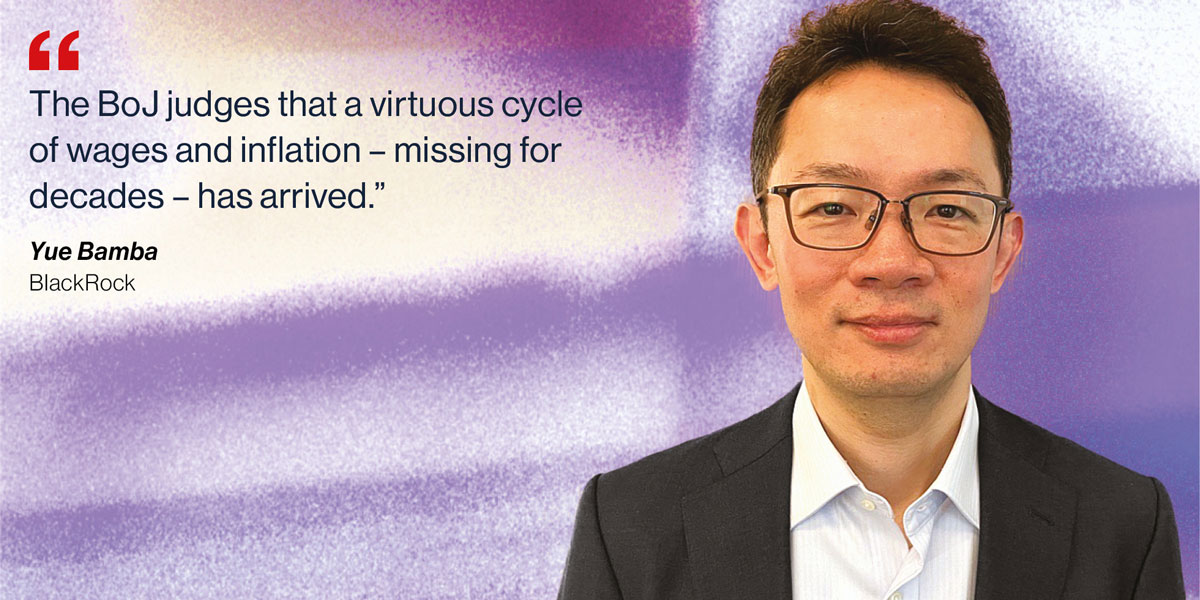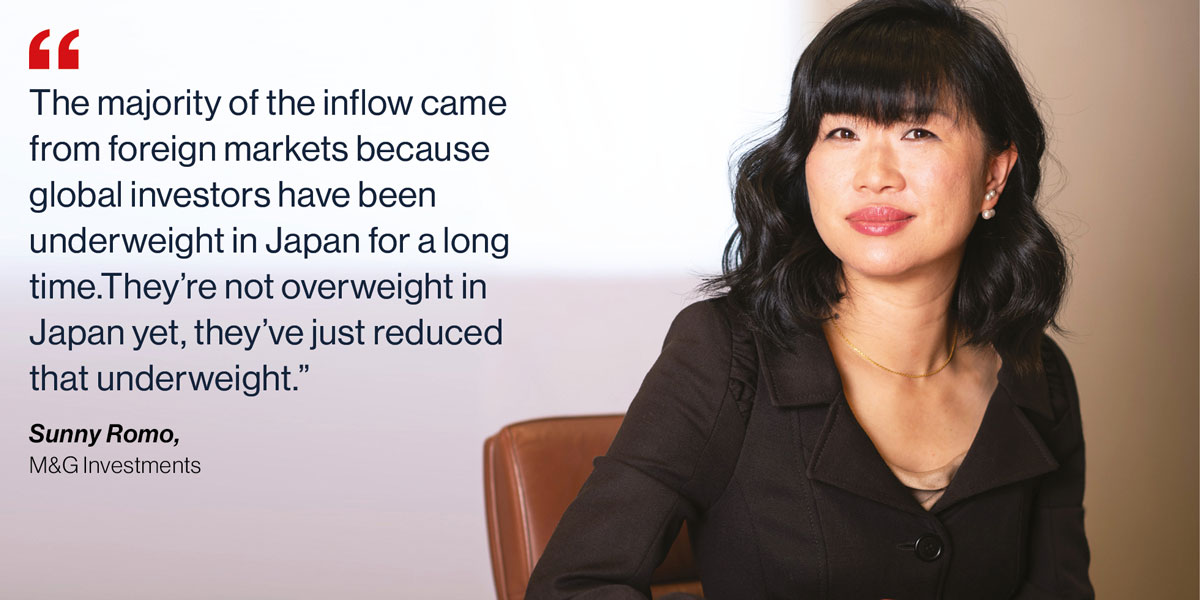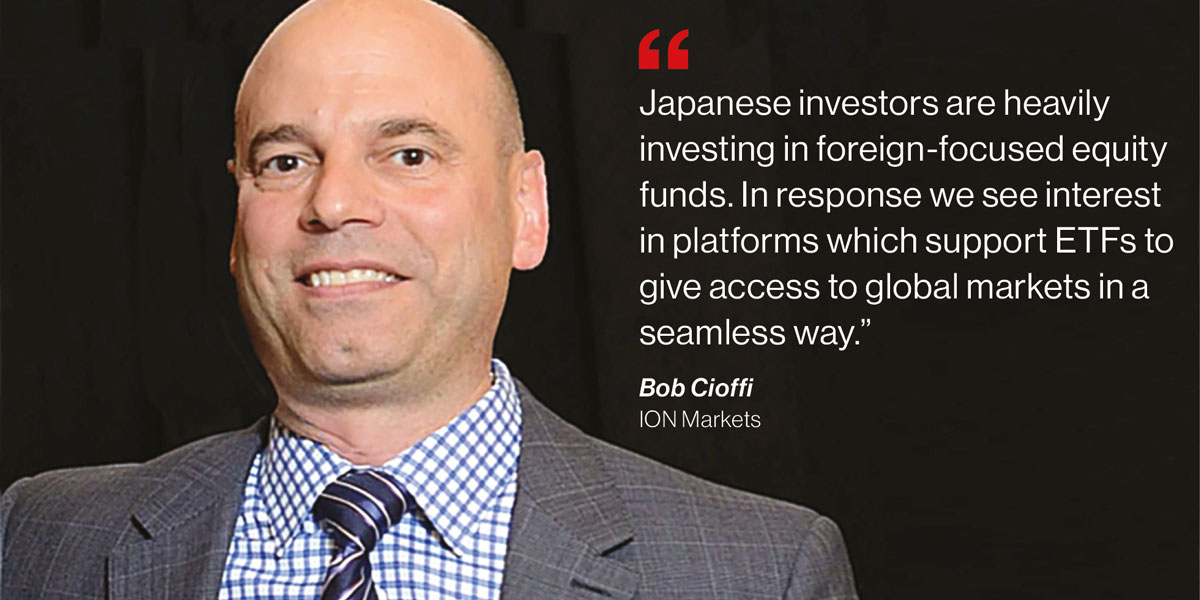UPDATE: Since the publication of this article in Global Trading’s Q2 issue, Japanese equities have been in the spotlight again – for all the wrong reasons.
A boom earlier this year in Japanese markets and the country’s increasingly strong economy sparked investor interest, with foreign investment on the rise. Experts in the region spoke to Global Trading about the journey that led to the success, current trends and what they expected to happen next; all before markets tumbled to their worst levels since the 1987 crash, sparking panic and sending US markets into freefall.
READ MORE: US markets in freefall – more than a flash in the pan?
Just months before the downturn, Japan was being seen as an increasingly popular investment prospect for international investors, putting the country back in the spotlight after a long time in the shadows. Opinions expressed in this article reflect that landscape.
***
Surges in Japanese stocks, with the Nikkei index reaching its highest point since 1989, and the country’s long-awaited return to inflation have all made headlines. This exit from two and a half decades of deflation has perhaps been the most publicised news; in January, the Bank of Japan’s inflation forecast was between 2.2% and 2.5% for the fiscal year. By April, that prediction had risen to 2.5% and 3%. Interest rates are also changing, with the bank shifting from negative 0.1% to 0-0.1% in March and quantitative and qualitative easing measures paused.

“The BoJ judges that a virtuous cycle of wages and inflation – missing for decades – has arrived,” affirms Yue Bamba, head of active investments for Japan at BlackRock. He adds that this “benign macro backdrop […] bodes well for the outlook for corporate profits and margins”.
Several factors have played into these recent successes, in what Sunny Romo, equities investment director at M&G Investments, describes as a “stars aligning moment”, and the culmination of initiatives that were seeded more than a decade ago. In 2012, Japanese prime minister Shinzō Abe implemented a series of economic policies collectively labelled ‘Abenomics’. Abe wanted to see the country’s corporate sector start “pulling its weight”, Romo explains, recognising that without changes being made Japan’s place in the global economy would continue to fall. It was something of a national crisis moment, she adds.
The concept was well received at the time. “Foreign investors were piling into Japanese equities because they were persuaded by the sincerity of Abe’s message,” Romo recalls, but failed to see that this would be no overnight change. It would require a complete shift in mentality, moving from a social enterprise-type structure to one based on pursuing profit, and would necessitate the introduction of guardrails and corporate governance to support the new systems. “That time element disappointed a lot of foreign investors, so they gradually left the Japanese stock market after the initial excitement,” Romo notes.

However, over the last 18 months or so things have changed once again. Changes to corporate governance have gained momentum, with Bamba expecting profitability to rise in tandem. Geopolitical events have also played a role in making Japan an appealing prospect for international investors. The war in Ukraine and the long-lasting impact of Brexit left European and UK markets looking wobbly, with market participants hesitant to put their eggs in either basket. The risk of investing in politically unstable markets, a risk made more acute by the Ukraine war, made emerging markets a less attractive option too.
In contrast, “Japan was trading on very cheap valuations, the economy was looking better both in general and from a bottom-up, company-specific perspective, and there were a lot of good stories coming from the corporate sector”, Romo says. “I think all of this captured global investors’ imaginations.”
Domestic investors
Despite growing global interest in Japanese equities, domestic investors currently represent a significant minority in the country’s markets. According to Reuters, Japanese equities funds with a purely domestic focus saw just US$1.2 billion in inflows over January 2024, while those with a foreign investment focus recorded US$7.8 billion over the same timespan. “Japanese investors are heavily investing in foreign-focused equity funds,” affirms Bob Cioffi, global head of equities product management at ION Markets. “In response we see interest in platforms which support ETFs to give access to global markets in a seamless way.”
James Marsden, managing director and head of post-trade business for APAC at Broadridge, corroborates this, stating that JPX officials see a 70/30 split in executed volumes, with the majority coming from overseas. Two decades ago, he says, this figure was reversed.

While this may be concerning on the surface, Romo provides a more positive outlook on the figures. “The data is still in its early days,” she assures, with the investment allowance of Nippon Individual Savings Account (NISA), the country’s answer to the UK ISA, only being increased in January 2024. That increased allowance “really seems to have been taken up”, she notes, adding that the investment split currently seems to be fairly equal between domestic and foreign markets. Figures from the Japanese Stock Exchange support this, with the company reporting 47% of NISA investments going into domestic stocks – mainly high dividend yields – and 50% going to investment trusts, which focus primarily on global funds but also allocate to Japanese stocks. “I have high hopes for the future of investment culture for domestic investors,” Romo affirms.
From the 70% perspective, “the majority of the inflow came from foreign markets because global investors have been underweight in Japan for a long time,” Romo explains. “They’re not overweight in Japan yet, they’ve just reduced that underweight.”
Alongside the draw of the NISA, some large online firms have taken commissions on domestic stock trading to zero, Marsden reports. “This has excited the domestic market,” he says, something that Reuters says will be crucial if the country is to maintain its uptrend and capitalise on the economy’s strength.
Following a recent trip to Japan, Romo’s belief that the domestic market will continue to grow has been bolstered. “The previous generation was really scarred by the bubble bursting in the early 90s, which basically destroyed stock investment culture in Japan,” she explains, but recently public interest in investing has been on the rise. Sales of books about investing are booming, with various guides and manuals a growing presence on bestseller tables.
Inflows
Japan has been traditionally underweighted in EMEA portfolios, according to a recent report from BlackRock. Generally, the report adds, a lack of investment in the region has been the result of poor returns on equity and capital inefficiencies. However with a more positive strategic and tactical outlook in place, this is changing – as is evidenced by the significant proportion of external investment flowing into the Japanese economy, and the greater risk-adjusted returns that EMEA investors are achieving when compared to European equities.
Marsden has observed continued interest in the country from international investors. “Global clients want to come into Japan and expand their footprint. It’s a very good market, if you can get a good footprint here,” he says. However, he adds that the market is highly competitive, complicated and highly regulated, with a significant number of processes needing to be completed before a trade can settle. In addition, Marsden suggests that the taxation system in Japan is more complex than other advanced markets in the APAC region, which could discourage investors from breaking into the market.
Romo disagrees with this view. “I have never felt that the Japanese market specifically has anything to disadvantage foreign investors from a legal or regulatory point of view,” she remarks. What may pose a challenge is understanding Japanese culture, however, which she states is “paramount” if an investor wants to be successful in the country’s equities market. “If you’re a global investor just dabbling in Japan occasionally and you don’t have the full understanding of that background, there may be things that will catch you off guard. [You need to] understand how you’re supposed to behave, engage with companies in the right manner. Cultural understanding is absolutely key.”

Outflows
As foreign investment flows into the Japanese markets, Japanese investors have equally become far more open to outward investments, Marsden says. This, too, is a fairly recent trend; “if you went back 20 or 30 years, the number of people in Japan buying foreign bonds or foreign equities was probably much lower”. He observes that the demand for global products in Japan is up on both a wholesale and retail level, and suggests that the popularity of such products could be down to their increased accessibility. In an evermore connected world, technology allows investors to broaden their horizons and reach markets with far more ease than was previously possible.
Japanese firms are also capitalising on a more globalised landscape, Marsden continues, with the country’s companies wanting not only to optimise their domestic performance but to expand globally and grow their business. This has also required technical development, he says, recalling how the markets stood when he arrived in Japan more than 20 years ago.
“Broker-dealers had a system that could process Japanese products, but they didn’t have a system that could process foreign products. If you’ve never assumed any decimal places, then you can’t do a certain type of computation, then you can’t get the right interest amounts for example. A lot of things can go wrong if your system doesn’t have multi-market, multi-currency, multi-product capabilities built in from the beginning.”
Although the first international port of call for Japanese investors has typically been the US (“Japan has often looked to the US as a leader in this space, as many countries have,” Marsden shares), the outlook is now far broader than that. The government pension investment fund is currently investing into more than 150 markets globally, he reports, and predicts that cross-border trading will continue to grow in volume moving forwards.
What’s next?
In light of recent events, expectations and hopes are high for Japanese markets. “It’s going to be a big opportunity,” Marsden confirms, adding that Broadridge’s clients are anticipating profitability in bonds and OTC derivatives as well as equities. “There’s a lot of appetite from people to be able to trade lots of different products,” he says, citing the intentions of one asset manager to lean into stock lending and the desire of others to expand their businesses, diversify and gain bigger revenue streams.
For her part, Romo believes that Japan has “passed the inflection point” and is now solidly seeing the positive effects of its corporate governance reforms, the wheels of which began turning more than a decade ago. It helps that the economic policies of the current prime minister, Fumio Kishida, are in her view “finishing what Abe started”.
“This is going to be a story for the decade,” she concludes. “We’re still in the midst of this journey.”
©Markets Media Europe 2024 TOP OF PAGE

